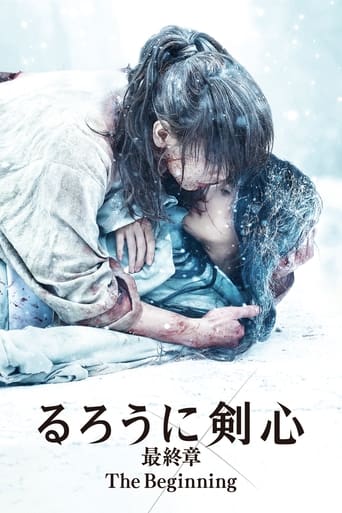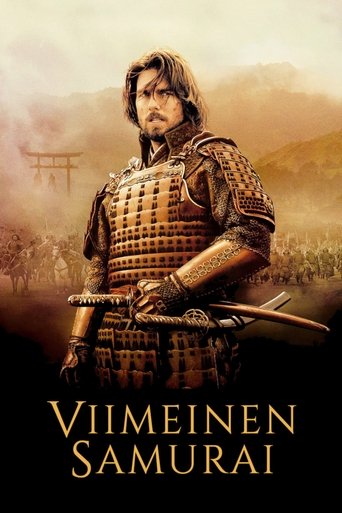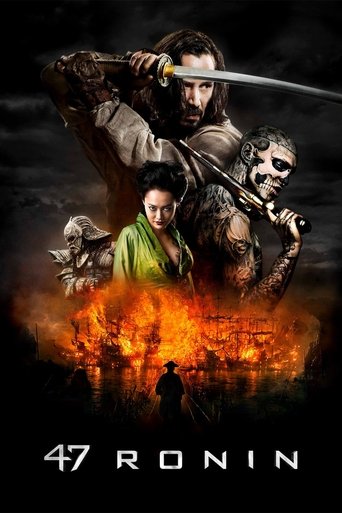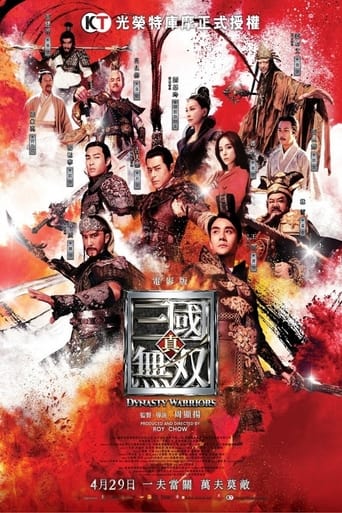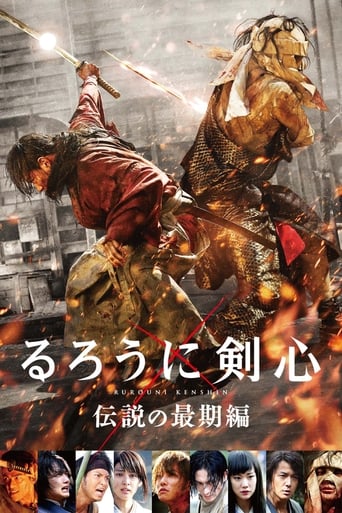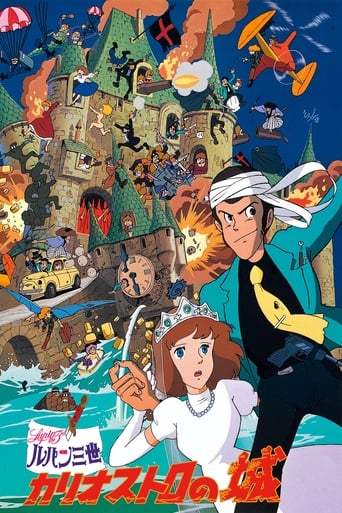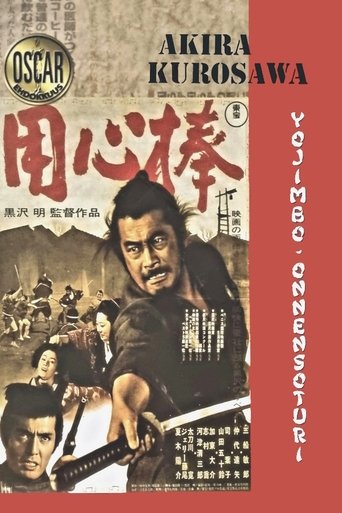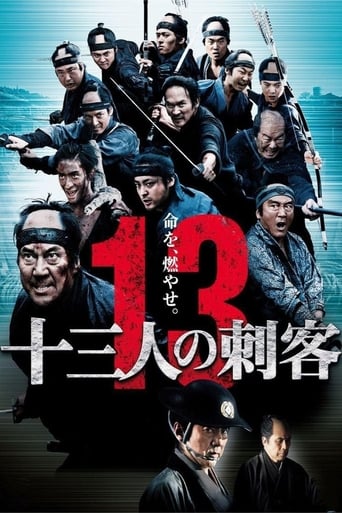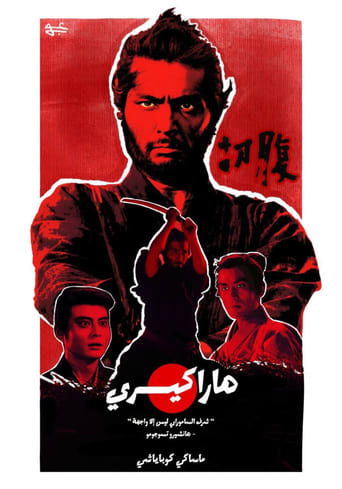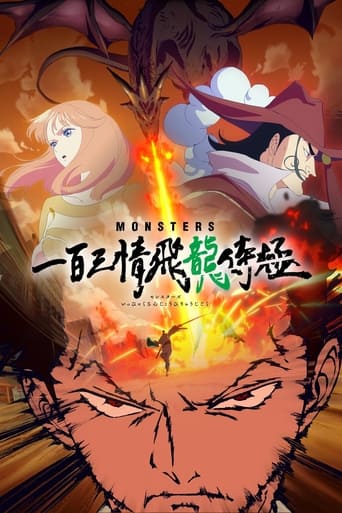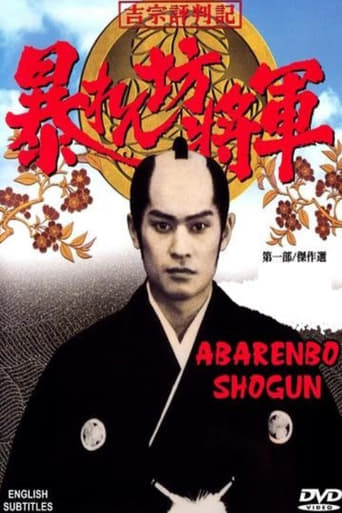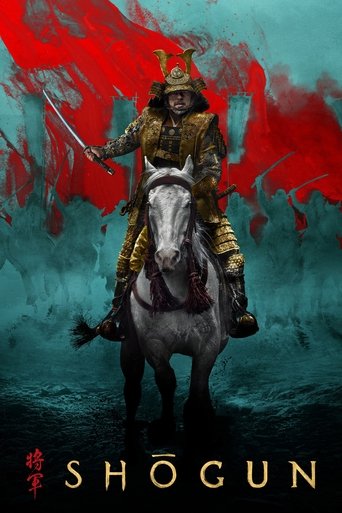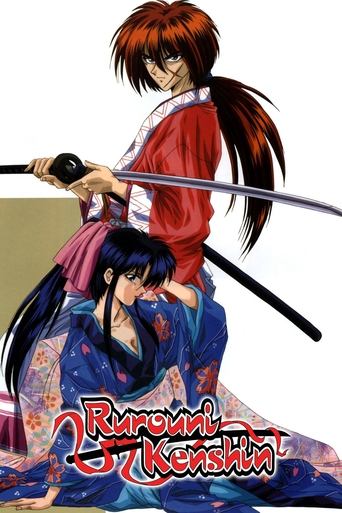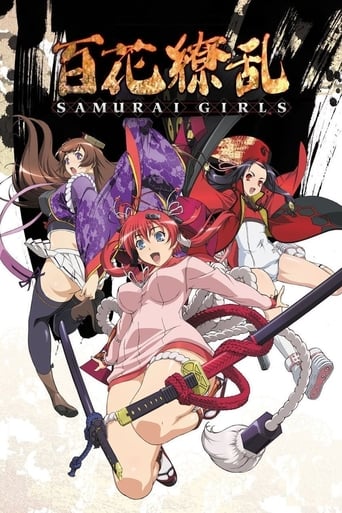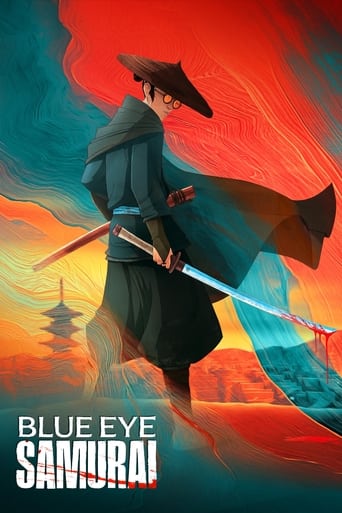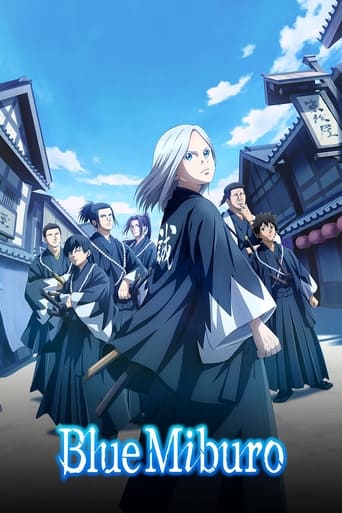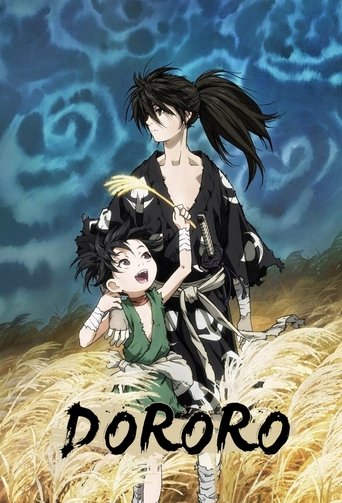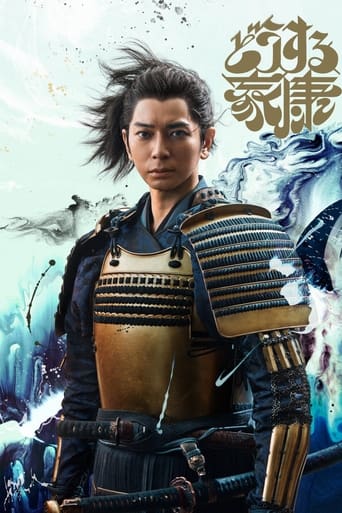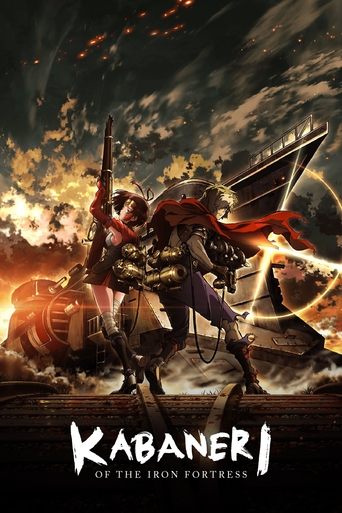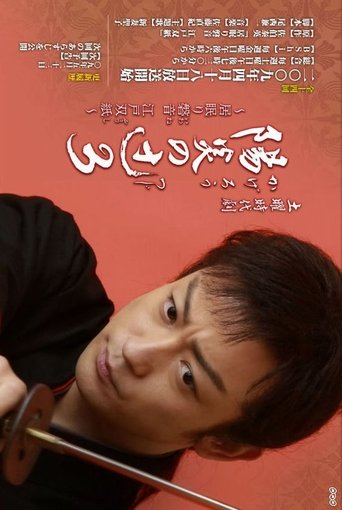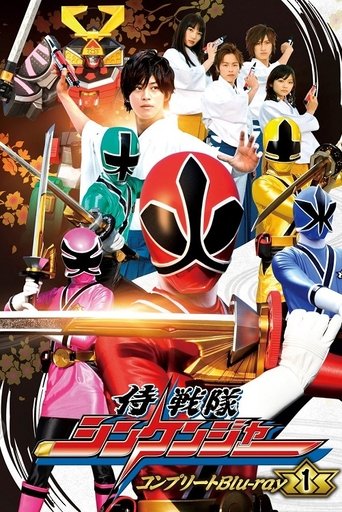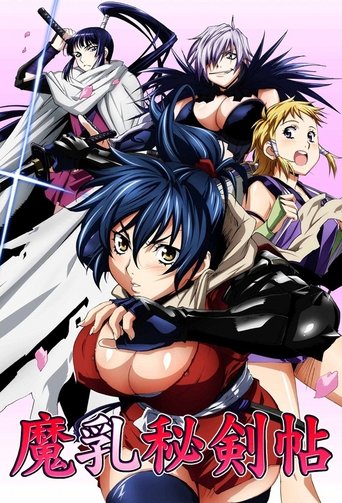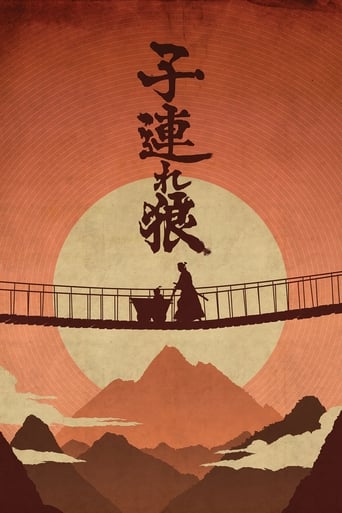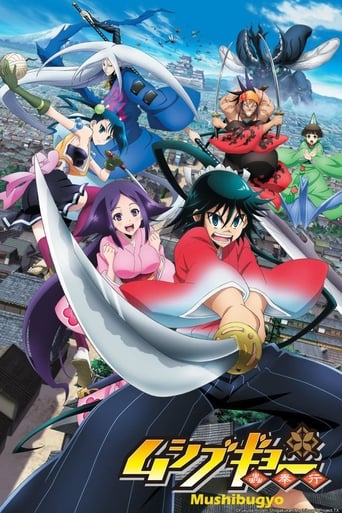Avainsana Samurai
るろうに剣心 最終章 The Final 2021
Sucker Punch 2011
Eeppinen toimintafantasiaelokuva ”Sucker Punch” on matka nuoren tytön mielikuvitusmaailmaan, jonne hän pakenee synkkää todellisuutta. Vapautuessaan ajan ja paikan kahleista hän voi matkata mielessään minne tahansa. Hänen seikkailuissaan todellisen ja kuvitelman välinen raja on vain veteen piirretty viiva.
Viimeinen samurai 2003
Kapteenina Amerikan sisällissodassa palvellut Nathan Algren värvätään taitojensa vuoksi Japanin keisarin, Meijin, joukkoihin. Hänen pitää kouluttaa keisarin joukot ratkaisevaan taisteluun maan viimeisiä samuraita vastaan. Algren haavoittuu ja joutuu samuraiden vangiksi. Vankeudessa hän tutustuu heidän tapoihinsa, kulttuuriinsa ja kunniakäsitykseensä. Enää ei olekaan selvää, kumman puolen hän valitsee...
Seitsemän samuraita 1954
Maailmankuulu seikkailuelokuva ja Akira Kurosawan pääteos kylästä, joka palkkaa muutaman samurain turvakseen kiertelevää rosvojoukkiota vastaan.
47 Ronin 2013
Kun häikälemätön sotapäällikkö tappaa herransa ja häätää pois hänelle uskolliset joukot, 47 samuraita ilman johtajaa ryhtyy kostoiskuun palauttaakseen heidän kunniansa. Kotoa häädettyinä ja hajallaan ympäri maata tämä Roninin joukko etsii käsiinsä Kain - puoliverisen, jonka he itse aiemmin hylkäsivät - taistellessaan samalla tietään läpi villin luonnon. He joutuvat kohtaamaan niin myyttisiä petoja sekä muotoa muuttavaa noituutta. Pian tästä karkotetusta ja orjuutetusta Kaista tulee heidän tappavin aseensa, ja hän muuttuu sankariksi, joka inspiroi koko kapinallisjoukkoa.
Kubo ja samuraiseikkailu 2016
Nokkela ja hyväsydäminen Kubo elättää itsensä kertoilemalla tarinoita pienen rannikkokaupunkinsa asukkaille, muun muassa ystävilleen Hosatolle, Akihirolle ja Kameyolle. Kubon hiljaiselo saa äkillisen lopun, kun hän tulee kutsuneeksi menneisyydestä hengen, joka laskeutuu taivaista langettamaan muinaista kostoa. Kubon on pelastettava perheensä ja ratkaistava kaatuneen samurai-isänsä arvoitus. Hän kohtaa pakomatkallaan kaksi uutta ystävää, Apinan ja Kuoriaisen. Maagisen shamisen-soittimensa avulla hänen on päihitettävä jumalia ja hirviöitä, joiden joukossa ovat kostonhimoinen kuningas ja pahat kaksossisarukset. Onnistuuko Kubo selvittämään verenperintönsä salaisuudet, yhdistämään perheensä ja täyttämään sankarin kohtalonsa?
真・三國無双 2021
銀魂 2017
Vimmaiset tassut 2022
Hank on rakastettava koira, jonka suurin haave on tulla samuraiksi. Kun siihen tulee tilaisuus, hän on valmis etsimään kohtaloaan. Ikäväkseen hän löytääkin itsensä Kakamuchon kylästä, jonne hän ei ole lainkaan tervetullut. Siellä hän erottuu joukosta olemalla koira, kun kaikki muut ovat…kissoja! Ja kuten tiedämme, kissat todella, TODELLA vihaavat koiria. Hank haluaa epätoivoisesti miellyttää Kakmuchon asukkaita, ja tietämättään hän joutuu osaksi ilkeän narsistisen Ika Chun suunnitelmaa. Hänen ilkeä suunnitelmansa on saada Han auttamaan häntä karkottamaan Kakamuchon asukkaat kaupungistaan lopullisesti. Ikan tiellä maailmanherruuteen (okei, Kakamuchon herruuteen) on vain yksi pieni este. Mukaan kuvioihin astuu Jimbo, parhaat päivänsä nähnyt entinen mahtava samurai, ja rohkea kissanpentu Emiko, jolla on samat haaveet kuin Hankilla. Yhdessä tämä yhteensopimaton kolmikko aloittaa seikkailun, jonka aikana he voivat kukistaa ennakkoluulot ja oppia ystävyyden todellisen merkityksen.
るろうに剣心 京都大火編 2014
るろうに剣心 伝説の最期編 2014
るろうに剣心 2012
Verenpunainen aurinko 1971
Arizona 1870. Link ja Gauche ovat häikäilemättömiä varkaita ryöstämässä junaa. Junassa sattuu matkustamaan Japanin suurlähettiläs matkallaan Washingtoniin. Hänellä on mukanaan myös arvokas ja muinainen miekka, joka on tarkoitus antaa USAn presidentille. Ryöstön aikana Gauche pettää kumppaninsa, saa miekan haltuunsa ja pakenee saalis mukanaan junasta. Suurlähettilään samurai-palvelija Kuroda saa isännältään tehtävän hankkia miekka takaisin. Link haluaa osansa saalisrahoista, Kuroda taas säilyttää samuraikunniansa. Miehet joutuvat vasten tahtoaan yhdistämään voimansa ja Link lähtee johtamaan Kurodaa erämaan halki Gauchen jäljille. Miekka täytyy löytää seitsemässä päivässä. Jos tehtävä epäonnistuu, edessä on Kurodan kunnian palauttava seppuku - ja Kuroda on päättänyt ennen sitä tappaa myös Linkin.
Lupin III: Cagliostron linna 1979
Uransa ehtoopuolella olevan mestarivaras Lupin III:n uusin nerokas huijaus menee mönkään. Kasinolta vohkitut rahasäkit osoittautuivat taidokkaiksi väärennöksiksi! Lupin suuntaa toverinsa Jigenin kanssa Eurooppaan, kaukaiseen Cagliostron valtioon, koston kiilto silmissään. Suunnitelmat suistuvat raiteiltaan, kun parivaljakko kohtaa Clarissen, pulassa olevan kuninkaallisen neidon, joka on vastoin tahtoaan joutumassa naimisiin pahaenteisen kreivi Cagliostron kanssa. Prinsessan pelastaminen ei käy helposti, sillä Lupin ja Jigen – apunaan Lupinin arvaamaton ex-tyttöystävä Fujiko ja miekkamies Goemon – joutuvat raivaamaan tiensä halki ansojen täyttämän linnan, hengenvaarallisen vankityrmän ja ammattisalamurhaajien armeijan! Onnistuuko Lupinin pelastaa tyttö, pysyä poissa arkkivihollisensa tarkastaja Zenigatan kynsistä ja paljastaa Cagliostron linnan salaiset aarteet?
Yojimbo – Onnensoturi 1961
Akira Kurosawan tyylikäs samurai-klassikko toimi esikuvana Kouralliselle dollareita. Isännätön samurai alkaa ovelasti pelata kylän kilpailevia sotaherroja toisiaan vastaan.
十三人の刺客 2010
Harakiri 1962
1630-luvun Japani. Isännöttömät samurait, roninit, alkavat menettää asemaansa ja merkitystään. Kunniakas tapa kuolla on tehdä harakiri, rituaali-itsemurha. Hanshiro Tsugumo saapuu feodaaliherran luo etsimään paikkaa harakirilleen, mutta tämä alkaakin puhua nuoremmasta aikaisemmin saapuneesta samuraista, ja tilanne muuttuu toiseksi.
MONSTERS 一百三情飛龍侍極 2024
The Unfettered Shogun 1978
Set in the 18th century, the show follows the Shogun Yoshimune, who likes to disguise himself as a low-ranking samurai and go into his capital of Edo to see the life of the common man, as well as to seek out and punish evildoers who would hurt his citizens. He is aided by Magistrate Oo'oka and a vivacious fireman, Tatsugoro, as well as a rotating cast of other recurring characters. Along with Zenigata Heiji and Mito Kōmon, it ranks among the longest-running series in the jidaigeki genre. Like so many other jidaigeki, it falls in the category of kanzen-chōaku, loosely, "rewarding good and punishing evil."
Rurouni Kenshin 2023
Ten years have passed since the end of Bakumatsu, an era of war that saw the uprising of citizens against the Tokugawa shogunate. The revolutionaries wanted to create a time of peace, and a thriving country free from oppression. The new age of Meiji has come, but peace has not yet been achieved. Swords are banned but people are still murdered in the streets. Orphans of war veterans are left with nowhere to go, while the government seems content to just line their pockets with money.
Shōgun 2024
In Japan in the year 1600, at the dawn of a century-defining civil war, Lord Yoshii Toranaga is fighting for his life as his enemies on the Council of Regents unite against him, when a mysterious European ship is found marooned in a nearby fishing village.
Onihei Hankachō 1989
Hasegawa is a chief police of big heart who leads a band of samurai police and cultivates reformed criminals as informants to solve difficult crimes.
Rurouni Kenshin 1996
The Meiji Era was one of great renewal for Japan, where swords and killing were outlawed. However, many survivors from the time of Revolution still live, lurking in the shadows and waiting for a chance to use their killing blades again. Only Kenshin Himura, formerly one of the most brutal of killers, hopes to keep his swordsman's honor and still live in the new era.
Samurai Girls 2010
The story takes place in Japan in the early 21st century, in an alternate reality where the Tokugawa Shogunate has remained in power. In this reality, student councils are tasked with oppressing schools. Yagyuu Muneakira is a high school student who rebels against his student council with the help of girls who've had the names of famous samurai heroes passed on to them.
BLUE EYE SAMURAI 2023
Driven by a dream of revenge against those who made her an outcast in Edo-period Japan, a young warrior cuts a bloody path toward her destiny.
Blue Miburo 2024
The year is 1863, with the story being based in Kyoto. We follow a youth named Nio who is an honest and kind soul who's considerate of his family, yet he also has a hidden burning passion for seeking justice. From the time he came across Toshizou Hijikata and Souji Okita, members from a group of hated ronin known as the Miburo, his life then takes a turn to a bluer, and clearer path. Nio, alongside the other men whose hearts burn bravely and true, step forth towards an honest path with their blue wills adorned on their hearts!
Dororo 2019
A samurai lord has bartered away his newborn son's organs to forty-eight demons in exchange for dominance on the battlefield. Yet, the abandoned infant survives thanks to a medicine man who equips him with primitive prosthetics—lethal ones with which the wronged son will use to hunt down the multitude of demons to reclaim his body one piece at a time, before confronting his father. On his journeys the young hero encounters an orphan who claims to be the greatest thief in Japan.
Sengoku BASARA: Samurai Kings 2009
During the Sengoku period, there are many factions constantly at war. One of these is led by a one-eyed man named Date Masamune and another by the imposing Takeda Shingen. The latter has a fiercely loyal subordinate named Sanada Yukimura who goes head to head against Date Masamune multiple times, but the battles between them tend to get interrupted. One such battle occurs when both men try to go after another leader named Imagawa, and they’re forced to break off their heated duel when Imagawa attempts to flee the scene with his body doubles. Yukimura and Masamune go after separate Imagawas, but all of the doubles are killed by a third party, and when their paths cross again, they are in front of the menacing Oda Nobunaga and his army. It was Nobunaga’s subordinates that killed those body doubles, and Nobunaga himself proceeds to kill the real Imagawa with a shotgun blast to the head.
Hyouge Mono 2011
Sasuke Furuta is a vassal of the great warlord Nobunaga Oda and a man obsessed with tea ceremony and material desires in his pursuit of a fortuitous life. Having learned from Nobunaga and the legendary tea master Soueki Senne, Sasuke walks the way of the Hyouge Mono.
What Will You Do, Ieyasu? 2023
The drama series depicts the life of Tokugawa Ieyasu (January 31, 1543 – June 1, 1616). Takechiyo (who later becomes Tokugawa Ieyasu) was born as the son of a poor and powerless daimyo. Takechiyo lost his father during a war. He grew up lonely and away from his mother. Takechiyo didn't have a clue about what his future would hold. He then has a dramatic meeting with the young Oda Nobunaga.
Kabaneri of the Iron Fortress 2016
In the midst of an industrial revolution, the people of Hinomoto fight hordes of undead creatures, known as Kabane, using powerful armored trains.
Kagerou no Tsuji 2007
Sakazaki Iwane is a ronin who spends idle days in Edo. Until a few months ago, he was a promising son and successor to a powerful family in Bungo. He has came back to Edo, where he lived for a while for swordplay training with his two best friends, after a tragedy in the three's home domain—both of the two friends died, one of them killed by Iwane by command of the domain lord's chief retainer. Iwane left his home for Edo, leaving behind his fiancée, a sister of the friend he killed. Eventually, Iwane detects the conspiracy behind the deaths of the two friends and struggles to reform his domain.
Samurai Sentai Shinkenger 2009
For eighteen generations, samurai of the Shiba Clan have suppressed the evil intentions of the Gedoushu, malevolent spirits that enter the world of the living from gaps between buildings and other structures. Now, Takeru Shiba, the youngest head of the Shiba Clan must gather his four vassals in order to battle the Gedoushu under the revived Doukoku Chimatsuri as the Shinkengers.
Manyu Scroll 2011
It is currently the Taiheimeji era, during the rule of the Tokugawa shogunate. In this era, breasts mean everything. If you have breasts, you are guaranteed wealth and popularity, but if you lack them, you are rarely considered human. Inside the shogunate, there is a group of warriors that support the government—the Manyuu Clan, which helps raise the future big breasts. Written on a secret scroll possessed by the clan, there are said to be various techniques on how to grow big and beautiful breasts. Chifusa is the heir of the clan. However, she takes the secret scroll and runs away with it, hoping to fight against the cruel world that the Manyuu Clan has created…
The Tree In Sunlight 2000
A story set in the mid-1800's about a young doctor who has been trained in Western-style medicine and a young samurai who is trying to live up to the old traditions of his class and culture. The story is actually based upon real people - the doctor, Ryo-an, was Tezuka's great grandfather. The manga series was adapted to anime by Madhouse Studios and premiered in Japan on NTV on April 4, 2000.
Shōgun 1980
An English navigator becomes both a player and pawn in complex political games in feudal Japan.
Lone Wolf and Cub 1973
Ogami Itto is a master swordsman who holds a position of high power in the Tokugawa Shogunate. Highly trusted by the Shogun, he serves as the official decapitator, assisting lords and samurai who have been ordered by the Shogun to commit seppuku. One day, Itto’s wife and members of his household are brutally murdered by a clan seeking to avenge their lord’s execution, which had been carried out by Itto. In the wake of the attack, two items are left in Itto’s home: his unhurt infant son, Daigoro, and a symbol meant to signify Itto’s betrayal of the Shogun. Disgraced by the false symbol, Itto is labeled a traitor and forced to forfeit his position. He becomes a ronin, wandering the country with his son, searching for the men who killed his wife, seeking to clear his name and avenge her death.
Mushibugyou 2013
The action story is set in Edo-era Tokyo in the early 1700s. The eighth shogun Tokugawa Yoshimune ordered boxes to be installed so commoners can submit their thoughts. After hearing their voices, the shogun creates a new magistrate unit — Mushibugyou — to protect the people in the heart of the city. Each member is a specialist with unique fighting skills.
